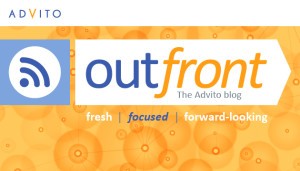To assess the current and future performance of your travel program, ask yourself a few simple questions, advises Advito traveler engagement expert Lesley O’Bryan in a recent Out Front blog. Here’s her first question:
Q: Which statement most closely portrays your company’s travel program?
- The travel program is designed around what the business hopes/wants the traveler to do, using the prescribed tools, processes, relationships, and goals we have in place.
- The travel program is designed around what travelers need to be smart, productive, connected, and supported before, during and after travel, using a mix
 of tools, people and preferred relationships that know them over time.
of tools, people and preferred relationships that know them over time.
If you selected No. 1, then you and your company have an “inside-out” view of your travel program, business trips, and travelers. This means your processes and policies center on the capabilities, systems and financial needs of the business. To improve program performance, you tweak or optimize traditional methods. You might automate processes, control costs or improved traveler management to produce incremental improvements, but their effects diminish over time.
If you selected No. 2, then you and your company have an “outside-in” view of your travel program, business trips and travelers. This means your program is traveler-centric. It’s a progressive view that enables your travel program to keep pace and contribute to your company’s bottom

line today, and in the future. This view values travel policy and a managed approach to travel spend and your company’s goals. But it requires you to let go of a business trip as a formulaic process. Instead, it encourages design-thinking (like technology companies use) and views a trip as a journey comprised of a set of interactions and real-time decisions for the traveler.
O’Bryan advises that shifting from an “inside-out” to an “outside-in” approach offers a wealth of benefits by:
- Aligning your program with company goals
- Boosting employee engagement
- Connecting travelers to strategic imperatives
- Requiring ongoing updates to your travel policy and how you communicate with travelers, so that your program is built for change
- Requiring procurement to evaluate decisions based on improving the workplace and performance, rather than only on cost and proposed deliverables
Read O’Bryan’s full blog for more program assessment questions.


